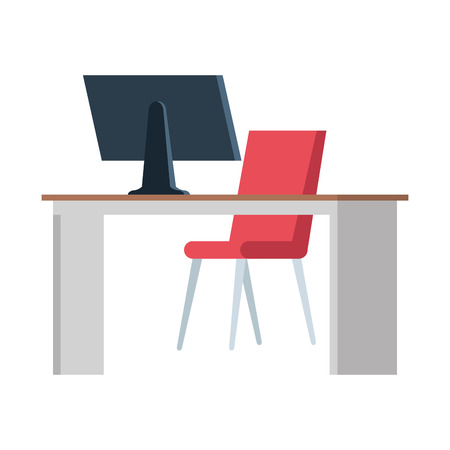1. Understanding Minimalist Feng Shui in Modern Workspaces
Minimalist Feng Shui is all about creating a harmonious, clutter-free environment that encourages focus and balance. In todays American home offices, where remote work has become the norm, blending minimalist design with Feng Shui principles can transform your workspace into a haven of productivity and calm.
What Is Minimalist Feng Shui?
Minimalist Feng Shui strips away the excess to focus on what truly matters: the flow of energy, or “chi,” and how your environment affects your mood and performance. Instead of filling every corner, you choose only essential items that support your work and well-being. This approach fits perfectly with American preferences for clean lines, open spaces, and practical organization.
Key Principles of Minimalist Feng Shui
| Principle | Description | How It Fits American Home Offices |
|---|---|---|
| Declutter | Keep only items that serve a purpose or bring joy. | Reduces distractions and makes cleaning easier in busy households. |
| Natural Light | Use sunlight to energize the space and boost mood. | Makes small or shared workspaces feel open and inviting. |
| Simplicity in Decor | Choose neutral colors and simple designs. | Helps create a professional background for video calls. |
| Balanced Layout | Arrange furniture to allow easy movement and good energy flow. | Supports ergonomic comfort and prevents cramped setups. |
| Connection to Nature | Add plants or natural elements to promote relaxation. | Brings a sense of calm to high-pressure workdays. |
Blending with American Home Office Culture
The minimalist Feng Shui approach fits right into the American lifestyle by encouraging flexibility, personal expression, and comfort. Whether your home office is a spare bedroom, a kitchen nook, or even part of your living room, these principles help you carve out a productive zone without sacrificing style or space. By focusing on what you truly need—and letting go of what you don’t—you’ll set yourself up for clearer thinking, less stress, and more efficient workflow every day.
2. Declutter and Design: Creating a Calm Workspace
In minimalist Feng Shui, less really is more—especially in your home office. A tidy, thoughtfully designed workspace not only reduces stress but also boosts focus and creativity. Here’s how you can declutter and design your space for better productivity and balance while working remotely.
Practical Steps to Declutter Your Home Office
- Start Small: Pick one drawer or shelf at a time. Don’t try to do everything at once—it gets overwhelming fast!
- Sort and Simplify: Divide items into three categories: Keep, Donate, and Toss. Be honest about what you truly use.
- Cable Control: Use cable organizers or zip ties to keep cords out of sight and untangled.
- Paper Management: Go digital where possible. Use cloud storage for files and scan important documents instead of keeping paper copies.
- Daily Reset: At the end of each workday, take five minutes to clear your desk and put things back in their place.
Minimalist Workspace Design Tips
- Select Essential Furniture: Choose a comfortable chair and a desk with enough space for just what you need—no bulky extras.
- Keep Decor Simple: Limit desk decor to one or two meaningful objects, such as a small plant or family photo.
- Create Clear Zones: Have dedicated spots for work, supplies, and breaks—even if it’s just different sections of your desk.
- Use Neutral Colors: Stick to calming shades like white, beige, soft gray, or light blue for walls and accessories. These promote relaxation and focus.
Quick Reference Table: Decluttering Checklist
| Area | Action |
|---|---|
| Desk Surface | Clear off non-essentials; keep only daily use items |
| Shelves/Drawers | Purge unused supplies; organize by category |
| Cables & Tech | Tidy with organizers; label chargers |
| Papers/Documents | Digitize important files; recycle old papers |
| Decor Items | Edit down to one or two favorites |
The Less-Is-More Mindset
The goal isn’t empty space—it’s intentional space. When your home office holds only what you truly need and love, it becomes much easier to stay on task, feel calm, and let positive energy flow. Embrace simplicity, and watch how your productivity grows!

3. The Power of Placement: Desk Positioning and Energy Flow
In minimalist Feng Shui, where you place your desk is just as important as what’s on it. The right placement can boost your focus, creativity, and sense of well-being—especially when working from home in American apartments, houses, or compact spaces. Here’s how to arrange your workspace for the best energy flow, following the principles of the Command Position.
What is the Command Position?
The Command Position means placing your desk so you can see the main door without being directly in line with it. This spot helps you feel secure and in control—key elements for productivity and calm. It’s a timeless Feng Shui rule that works beautifully in any modern American home office.
Optimal Desk Placement: Quick Reference Table
| Space Type | Recommended Desk Placement | Why It Works |
|---|---|---|
| Apartment Studio | Desk against a solid wall, facing the entrance but not blocking pathways | Saves space and allows visual command of the room |
| House Home Office | Desk diagonal from the door, with a clear view but not directly in line | Gives a sense of security and balanced energy flow |
| Small Nook or Corner Space | Desk positioned so your back isn’t to the entry; use a small divider if needed | Keeps energy circulating and reduces distractions from behind |
Furniture Arrangement Tips for Balanced Energy
- Avoid having your back to doors or busy walkways: If unavoidable, place a mirror on your desk to reflect the entrance.
- Keep space behind your chair: A solid wall or bookshelf gives support and stability—think of it as having “backup.”
- Let natural light flow in: Place your desk near a window if possible, but avoid sitting with your back directly to it (which can create restlessness).
- Edit your furniture: Keep only essential pieces around you. Too many items block energy and create clutter.
- Create boundaries in shared spaces: Use rugs, screens, or shelving units to mark your work zone—this helps separate work from relaxation areas.
Troubleshooting Common Layouts in U.S. Homes
- No dedicated office? Try a folding desk that can be tucked away after hours.
- Windowless rooms? Add plants or artwork depicting nature for a fresh energy boost.
- Corners feel cramped? Use light colors and minimal décor to open up the space energetically.
Your workspace should support both productivity and peace. With mindful placement and minimalist choices, even small American homes can feel spacious—and energized—for remote work success.
4. Incorporating Natural Elements for Wellness and Focus
Bringing nature into your minimalist home office isn’t just about style—it’s about creating a workspace that supports your well-being and helps you stay focused. In the spirit of Feng Shui, even a few simple natural touches can boost your mood, improve concentration, and make remote work feel more enjoyable.
The Power of Plants
Plants are a cornerstone of wellness in any space. They purify the air, add vibrant energy, and remind us to slow down and breathe. For a minimalist look, choose easy-care plants that won’t crowd your desk or demand too much attention. Here’s a quick guide to some top picks:
| Plant Type | Benefits | Best Placement |
|---|---|---|
| Snake Plant | Air purification, low maintenance | Desk corner or floor near workspace |
| Pothos | Boosts oxygen, easy to grow | Shelf or hanging planter |
| Succulents | Adds color, minimal water needed | Small pot on desk or windowsill |
| Bamboo | Symbolizes growth and good luck | Tabletop or entry to office area |
Maximizing Natural Light
Good lighting is essential for productivity and positivity. Whenever possible, set up your home office near a window so you can soak in plenty of daylight. If your space lacks natural light, use soft white LED bulbs and mirrors to reflect what you have. Avoid harsh overhead lighting—soft, indirect light feels calmer and more inviting.
Tips for Natural Light Success:
- Position your desk: Place it perpendicular to the window for balanced light without glare.
- Avoid blocking windows: Keep sills clear of clutter so sunlight flows freely.
- Use sheer curtains: Let in brightness while cutting back on heat or harsh rays.
Selecting Subtle, Natural Materials
The textures around you matter more than you might think. Choose furniture and accessories made from wood, stone, cotton, or wool to create a soothing atmosphere. These materials ground the room and connect you with nature—even inside four walls.
| Material | Mood & Effect | How to Use It |
|---|---|---|
| Wood (oak, maple) | Warmth and stability | Desk surfaces, shelving units, organizers |
| Cotton or Linen Fabrics | Simplicity and comfort | Curtains, chair covers, throw pillows |
| Stone or Ceramic Accents | Calmness and focus | Pencil holders, coasters, decorative bowls |
| Bamboo Accessories | Sustainability and clean lines | Laptop stands, trays, drawer inserts |
The Minimalist Approach: Less is More
You don’t need to fill every corner with greenery or stack up lots of wood pieces. A few thoughtfully chosen natural elements can make all the difference—helping you feel energized yet calm as you go through your workday at home.
5. Personal Touches: Meaningful Decor without the Clutter
Minimalist Feng Shui doesn’t mean your home office has to feel cold or impersonal. In fact, adding a few carefully chosen personal touches can boost your mood, inspire creativity, and support productivity—all while keeping your workspace calm and clutter-free. The key is to select decor that is both meaningful and purposeful, fitting seamlessly into your minimalist design.
Choosing Purposeful Decor
When deciding what to display in your home office, ask yourself if each item serves a purpose: Does it motivate you? Spark joy? Remind you of your goals or values? Here are some ideas for personal yet minimalist decor:
- Art: Select one or two pieces of art that resonate with you. Abstract prints, calming nature scenes, or simple line drawings work well for a clean look.
- Family Photos: Limit yourself to one framed photo on your desk or wall. Choose a picture that brings positive energy and motivation.
- Inspiration Boards: Use a small corkboard or magnetic board to display inspiring quotes, goals, or vision statements. Keep it tidy—less is more!
- Plants: A single low-maintenance plant like a snake plant or succulent adds life and boosts air quality without creating clutter.
Minimalist Decor Tips
| Decor Item | Feng Shui Benefit | Minimalist Tip |
|---|---|---|
| Art Print | Sparks inspiration and sets the mood | Choose calming colors and simple frames |
| Family Photo | Cultivates positive energy and connection | Display only one; avoid large galleries |
| Plant | Purifies air and promotes growth energy | Select compact varieties in neutral pots |
| Inspiration Board | Keeps goals visible and focus strong | Edit regularly; avoid overcrowding with papers |
Maintaining Balance in Your Workspace
The goal is to surround yourself with objects that have meaning—not just items that fill space. By being intentional about what you display, you honor both the principles of Feng Shui and the clarity of minimalism. This approach helps keep your energy focused, your mind clear, and your workspace ready for productive remote work.


